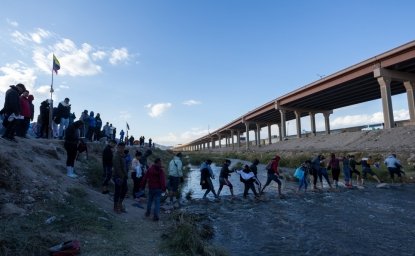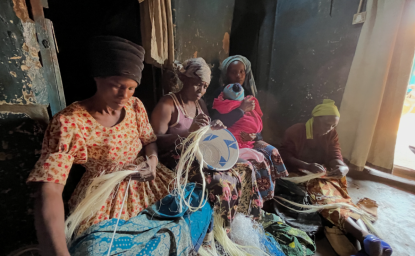Over the past six months, Canada has seen a rapid change in how asylum seekers are entering the country. These adjustments date back to March 24, when President Joe Biden and Prime Minister Justin Trudeau announced an expansion of the Safe Third Country Agreement (STCA) that allows the United States and Canada to work together to manage the flow of refugees between the shared land border. The extension sought to limit the number of asylum seekers entering Canada through unofficial entry points and lower the number of entries from the United States. These modifications gave Canadian and US border officers the ability to turn away refugees who entered either country without one of four exceptions: family member, unaccompanied minor, document holder, or public interest exceptions.
The expansion took effect at midnight the next day, minimizing the window between the announcement and enactment in an attempt to avoid a surge of people trying to cross the border before the amendment could be implemented. As part of the modification, Canada agreed to take in 15,000 refugees originating from South and Central America with the goal of alleviating pressure at the US-Mexico border. Significantly, it will also decrease the number of refugees crossing into Canada from the US border, as Canada processed approximately 40,000 asylum claims and interceptions in 2022. Yet, this extension of the STCA now makes it so those crossing at unofficial entry points do not have the right to claim asylum.
Roxham Road, a rural road between upstate New York and Quebec, was one of the main unofficial entry points that refugees used to cross into Canada from the United States and claim asylum. The numbers of asylum seekers entering Canada through Quebec have rapidly dropped since the extension of the STCA: 69 in April compared to 4,087 in March. The numbers continue to drop as May saw 46 and June only had 30.
After entering through an unofficial entry point prior to the amendment to the STCA, those who crossed the border were arrested and taken into custody by the Royal Canadian Mounted Police (RCMP). From there, they would undergo background screening, security checks, criminality checks, health checks, and questioning. Those who passed the background screening would be taken to eligibility screening where it would be determined if an asylum claim could be made. If an asylum claim could be made, the refugees would then move on to asylum claim processing, where they would either have their claim accepted or denied. If granted protected persons status, they would have the ability to apply to become a permanent resident. If refused, they must leave Canada.
With the extension of the STCA, claimants who enter through an unofficial entry point are no longer given the right to apply for asylum and forfeit all rights to seek asylum in the future. These refugees are detained and sent back to the United States.
Complicating the situation, however, is a 14-day stipulation that is endangering asylum seekers: if a refugee is in Canada for more than 14 days, they are no longer subject to expulsion. This exception is pushing some refugees to attempt entry into Canada by more dangerous means in order to remain undetected for the 14-day period. Shortly after the extension was announced on March 30, the bodies of eight migrants were found in the St. Lawrence River, which runs between the border of Quebec and New York.
With migrants taking riskier and more dangerous means of entry to avoid detection, is Canada actually seeing a decrease in asylum seekers? While there has been a reduction in the number of asylum seekers crossing Roxham Road and other unofficial points of entry, the overall numbers of asylum seekers in Quebec has stayed relatively even. June saw the highest number of asylum seekers, close to 11,000, across Canada: the highest month of 2023 thus far. If this trend continues, it is possible that Canada could receive more asylum seekers in 2023 than it did in 2022.
Refugees have also adapted by finding new routes of official entrance. Asylum seekers are arriving at airports with tourist visas and petitioning for asylum at immigration offices after their arrival. The number of asylum applications made at airports in Montreal and Toronto have tripled since the beginning of 2023. Comparing the numbers between 2022 and 2023, air ports of entry saw 1,136 asylum claimants in June of 2022 compared to 4,350 in June of 2023.
While the extension of the STCA worked to limit refugees entering Canada through unofficial points of entry such as Roxham Road, asylum seekers have sought alternate entry routes, thus making the March expansion of the STCA less effective in its goal of reducing the number of asylum seekers coming into Canada. The extension of the STCA has now made it more challenging for those seeking asylum and forced them into other means of entry. By entering through airports, this limits the entrances of asylum seekers coming from the United States directly but does not limit the overall number of entries, which are actually increasing. This now has the potential to overwhelm airports and immigration offices in Canada as the foot traffic coming from the United States has decreased leaving other means of entry to increase rapidly. Overall, the expansion decreased the flow of asylum seekers coming from the United States directly but has not worked to decrease the flow of asylum seekers into Canada.
While the STCA has succeeded in its goal of decreasing the number of asylum seekers crossing at illegal points along the US-Canada border, it has been less effective in containing the overall number of asylum seekers entering the country, as it has only changed the way they enter. Further measures will be necessary if Ottawa’s goal is to reduce overall entries by asylum seekers.







